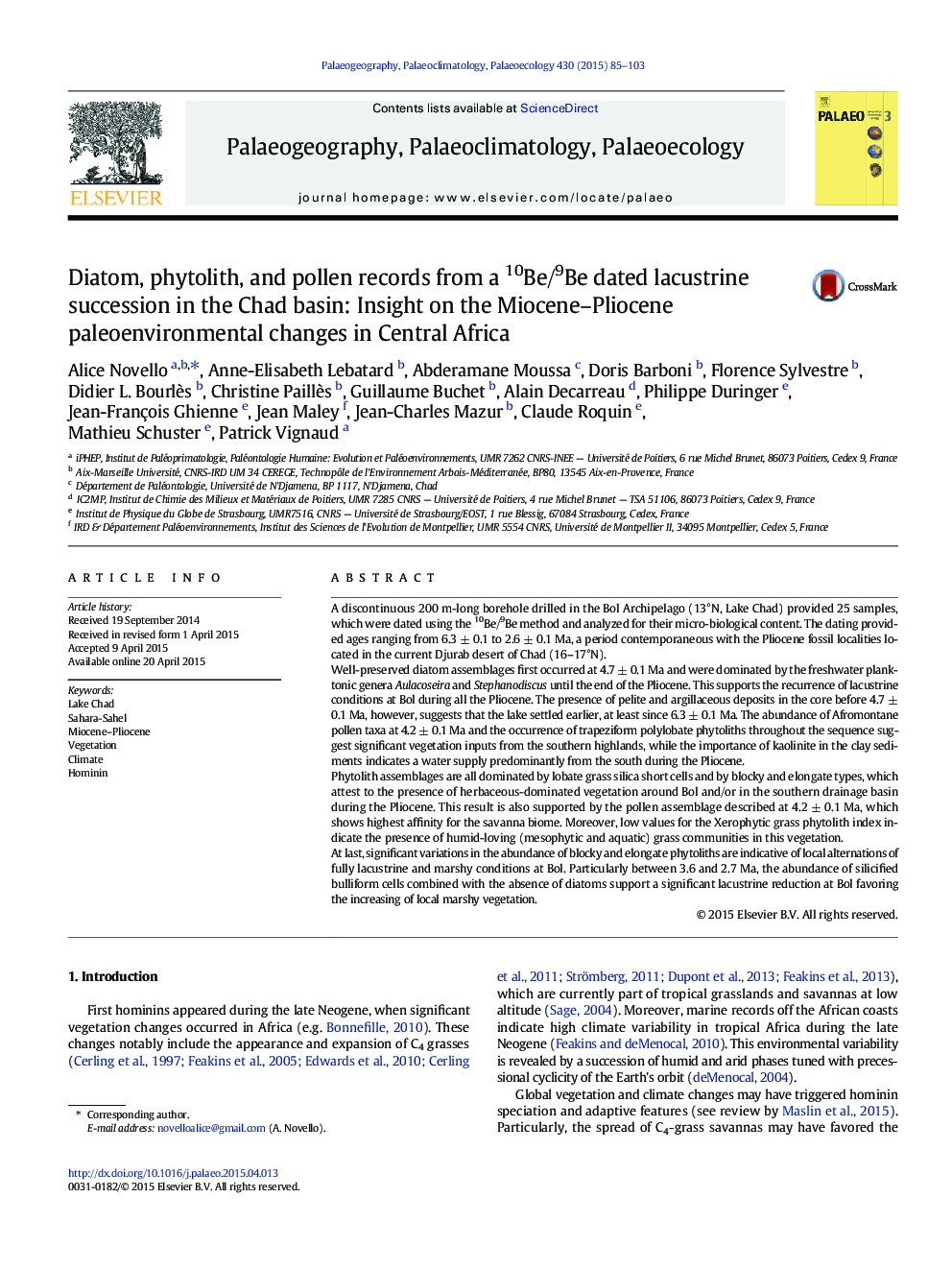| Article ID | Journal | Published Year | Pages | File Type |
|---|---|---|---|---|
| 4465945 | Palaeogeography, Palaeoclimatology, Palaeoecology | 2015 | 19 Pages |
•Sediments suggest a lake at Bol (13°N, Chad) since at least ~ 6 Ma.•Bol locality experienced alternating lacustrine–marsh conditions during the Pliocene.•During the Pliocene, paleolake Chad was supplied from the southern regions.•During the Pliocene, the tropical savanna biome was expanded in the Lake Chad basin.•A significant decrease of the lake occurred at 3.6–2.7 Ma along with regional aridity.
A discontinuous 200 m-long borehole drilled in the Bol Archipelago (13°N, Lake Chad) provided 25 samples, which were dated using the 10Be/9Be method and analyzed for their micro-biological content. The dating provided ages ranging from 6.3 ± 0.1 to 2.6 ± 0.1 Ma, a period contemporaneous with the Pliocene fossil localities located in the current Djurab desert of Chad (16–17°N).Well-preserved diatom assemblages first occurred at 4.7 ± 0.1 Ma and were dominated by the freshwater planktonic genera Aulacoseira and Stephanodiscus until the end of the Pliocene. This supports the recurrence of lacustrine conditions at Bol during all the Pliocene. The presence of pelite and argillaceous deposits in the core before 4.7 ± 0.1 Ma, however, suggests that the lake settled earlier, at least since 6.3 ± 0.1 Ma. The abundance of Afromontane pollen taxa at 4.2 ± 0.1 Ma and the occurrence of trapeziform polylobate phytoliths throughout the sequence suggest significant vegetation inputs from the southern highlands, while the importance of kaolinite in the clay sediments indicates a water supply predominantly from the south during the Pliocene.Phytolith assemblages are all dominated by lobate grass silica short cells and by blocky and elongate types, which attest to the presence of herbaceous-dominated vegetation around Bol and/or in the southern drainage basin during the Pliocene. This result is also supported by the pollen assemblage described at 4.2 ± 0.1 Ma, which shows highest affinity for the savanna biome. Moreover, low values for the Xerophytic grass phytolith index indicate the presence of humid-loving (mesophytic and aquatic) grass communities in this vegetation.At last, significant variations in the abundance of blocky and elongate phytoliths are indicative of local alternations of fully lacustrine and marshy conditions at Bol. Particularly between 3.6 and 2.7 Ma, the abundance of silicified bulliform cells combined with the absence of diatoms support a significant lacustrine reduction at Bol favoring the increasing of local marshy vegetation.
